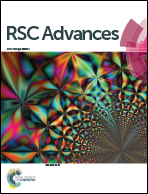Measurement of Wenzel roughness factor by laser scanning confocal microscopy
Abstract
The Wenzel roughness factor r is one of the most important parameters to characterize a super-hydrophobic surface. In this study, in order to prove the feasibility of using laser scanning confocal microscopy (LSCM) to measure the roughness factor r, the detected r values by LSCM on texture-regular surfaces were compared with those calculated firstly, and then the r values measured by LSCM for texture-irregular rough surfaces were compared with those measured by AFM. The results show that the r values of texture-regular surfaces measured by LSCM are close to those calculated, and the LSCM measured r values of texture-irregular surfaces with small roughness are consistent with those measured by AFM. Moreover, the r values of texture-irregular surfaces with large roughness can only be measured by LSCM, the detected r values of three such super-hydrophobic surfaces are 2.13 ± 0.01, 2.12 ± 0.01 and 2.13 ± 0.02, respectively. In addition, it is proved that the r measured by LSCM as a line length ratio is equal to the original definition of roughness factor as the ratio of actual area of solid surface to the horizontal projected area. Consequently, it is reliable to measure the r value of a texture-irregular surface with large roughness in micro or submicro scale by LSCM.



 Please wait while we load your content...
Please wait while we load your content...